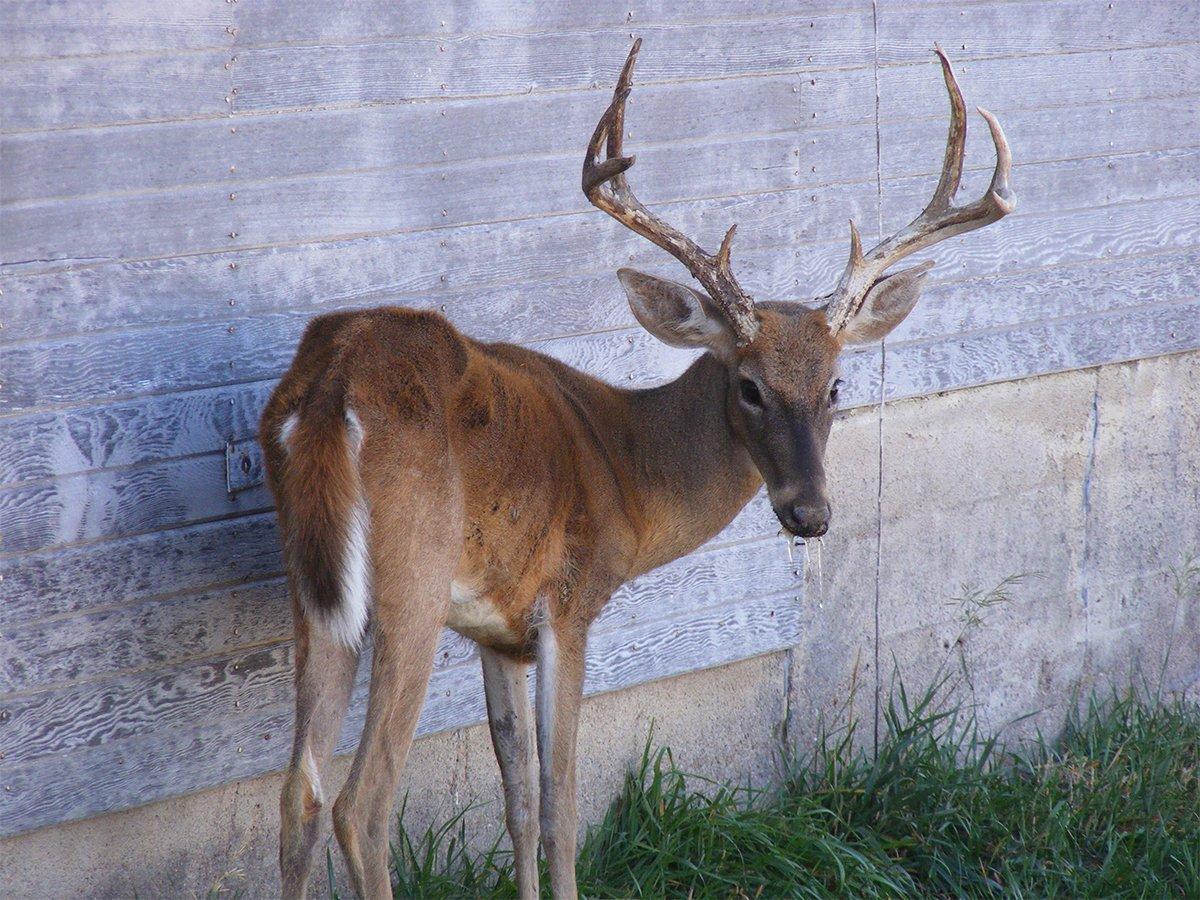CWD hasn't gone anywhere. Here's a look at the trends — some good and some bad — happening across North America
Chronic Wasting Disease (CWD) is a death sentence for whitetails. The neurological disease affects other cervids, too (mule deer, elk, moose), and can be transmitted through saliva, urine, feces, spinal material and brain fluids. It's caused by prions, which are malformed (misfolded) proteins. It's pretty scary, especially given how little we know about it. But there are some things we do know, and these three trends are dominating the CWD news right now.
CWD Continues to Spread
This disease was first discovered in Colorado captive cervids in the late 1960s. In 1981, it was found in the state's wild herds for the first time. Since then, it's continued to spread to neighboring states and regions.
It isn't slowing down, either. Headlines from the past two weeks highlight the disease spreading rapidly in Montana, South Dakota, Michigan, Iowa, Pennsylvania and more. Not only that but the rate of spread is increasing, too.
Montana officials tested nearly 7,000 animals and discovered 142 positive cervids, including the first cases in both moose and elk in Big Sky Country. In the Midwest, Iowa reported a record number of CWD-positive deer (43 of 7,000 tested deer). CWD continues to spread rapidly in South Dakota. Previously, it was contained to the Black Hills. No longer.
It's also spreading in the East. Approximately 17,500 Michigan deer were tested statewide, and 65 tested positive during the 2019 deer season. Almost 16,000 Pennsylvania samples were collected, too, and of those, more than 10,000 have been tested and 148 had CWD. Needless to say, it isn't going away. And it will continue to spread.
States Are Doubling Down on the Disease
There is no cure for CWD. For now, the only option states have is to contain and slow the spread of the disease. Idaho is one state preparing in advance. CWD hasn't been detected there yet, but The Jefferson Star reports that the Idaho Department of Environmental Quality is consulting with waste facilities and the hypothetical disposal of CWD-positive cervids. Idaho Fish and Game is on board with planning and forward thinking, too.
On the other hand, Minnesota already has CWD in captive and wild deer, and it's implementing bigger changes. It was already illegal to feed deer in 19 counties (at least 12 of which are known to have produced CWD-positive deer). Now, eight more counties have been added to increase the size of the watch zone. However, due to the lack of CWD detected in wild deer, feeding bans have been lifted for hunters in Kandiyohi, McLeod, Meeker, Renville and Wright Counties. With this being an example, there are inconsistencies in CWD management practices from state to state, and even county to county, as wildlife managers toe the line between implementing written response plans and keeping the hunting public happy.
Containment Knowledge Is Key, But New Research Is Vital
Until science finds the answer for CWD, containment is key. The sharing and dissemination of the information researchers currently know is increasingly vital for containment.
Many state agencies, such as the Tennessee Wildlife Resources Agency, are hosting periodic meetings to educate the public on CWD and the policies that go along with it. This is important, as cooperation with hunters is key to CWD and whitetail management in general.
Resources are available, and professionals are working diligently to spread awareness throughout the country. Pennsylvania game wardens are hosting public forums for outdoorsmen interested in learning more. Again, other states are doing the same.
Organizations and private parties are taking hard looks at the seriousness of this disease as well. Globe News Wire reports that the Alberta Professional Outfitters Society (APOS) is set to host a CWD Symposium in April.
Bright Spots
There are positive headlines, too. The University of Minnesota recently revealed that scientists used a $2 million grant to develop a ground-breaking CWD test that yields much faster results. This new test can supposedly report confirmation of prions within nine hours. This will theoretically increase the efficiency of testing facilities.
Likewise, according to The Altoona Mirror, dogs could eventually join the fight against CWD, too. The Pennsylvania Agriculture Department announced three grants totaling $1 million, including one to test whether dogs can be trained to detect CWD in deer feces. The other two grants will go toward producing live-animal tests.
Alongside the decrease in hunter numbers, CWD is likely the biggest challenge facing wild cervids today. It's important to keep taking steps forward. Like all biological mysteries, perhaps the right discovery to combat this always-fatal disease will be made someday. Until then, we'll continue bringing you the latest on this rapidly spreading threat.
Don't Miss: Has CWD Ever Actually Killed a Deer?
Check out more stories, videos and educational how-to's on deer hunting.








